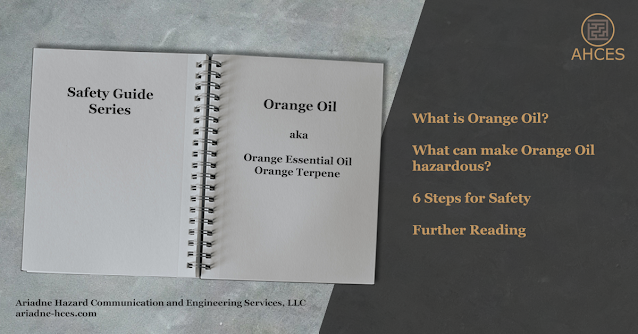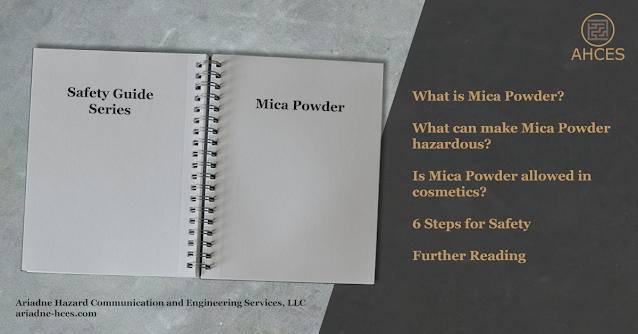Lauramine Oxide Safety Guide
What is Lauramine Oxide?
Lauramine Oxide, also known as lauryldimethylamine oxide (LDAO) or dodecyldimethylamine oxide (DDAO), is a tertiary amine oxide, a type of organic compound. Lauramine oxide has surfactant properties, which can stabilize foams, making it an ingredient in many cleaning products including glass cleaners, laundry detergents, and hand soaps.
Lauramine Oxide has the CAS Number 1643-20-5.
Notable Properties of Lauramine Oxide
Under normal conditions, lauramine oxide is a crystalline solid. It is a highly hygroscopic substance, meaning it will readily absorb water from the environment around it. It is soluble in water and can also be found in aqueous solutions.
What Makes Lauramine Oxide Hazardous?
Concentrated lauramine oxide is corrosive, and can cause serious eye damage, skin irritation, and respiratory irritation. Lauramine oxide is also harmful if swallowed, causing both irritation to the mucus membranes and being toxic.
In addition to having human health risks, lauramine oxide can be hazardous to aquatic life with long lasting effects and should not be released into water systems.
Lauramine Oxide Frequently Asked Questions
Is lauramine oxide flammable?
Lauramine oxide is not considered flammable for the purposes of transportation safety.
As an organic compound, lauramine oxide can act as a fuel source in a fire scenario. Due to its chemical composition, lauramine oxide can break down into hazardous gases if burned, including carbon dioxide and carbon monoxide.
Is lauramine oxide acidic or basic?
Lauramine oxide is basic and can react with acids, which is an exothermic reaction that can give off a significant amount of heat depending on the concentrations and quantities involved.
Why is there lauramine oxide in hand soap?
Lauramine oxide is a surfactant, which can help stabilize foam. This produces a more satisfying lather for washing hands. Lauramine oxide also has some antimicrobial properties, making it a popular dual-purpose ingredient for antimicrobial hand soaps.
6 Steps for Safety
Step 1: Read the Warnings
When working with a product for the first time, always read all the safety documents first. This includes safety data sheets, which should be provided by the manufacturer or importer of the geraniol product. There may also be an OSHA chemical label or a Consumer Protection label on the packaging of the lauramine oxide containing product. These documents all contain important information on the hazards of the product and instructions on how to mitigate those hazards.
Note that different products which contain lauramine oxide can have different safety considerations depending on other ingredients and the relative concentrations of those ingredients. For example, a scented hand soap which uses geraniol as a fragrance component may have additional respiratory irritation warnings.
Step 2: Prepare Your Workspace
Creating a safe workspace, sometimes referred to as engineering control, is a key component of working safely with any potentially hazardous substance.
Lauramine oxide can be worked with both as a solid crystalline substance, which can have dust related hazards, and as an aqueous solution, which can have liquid splash related hazards.
For dust hazards, a dust collection system which can filter out any small organic particles is important. This prevents respiratory harm caused by breathing in a corrosive substance.
Step 3: Gather Your PPE
For handling solid lauramine oxide, the following PPE is
recommended.
- Eye Protection
- Safety goggles which form a protective seal around the eyes can be used to prevent lauramine oxide dust from reaching the eyes.
- Respiratory Protection
- Particularly with activities that are likely to cause airborne dust, such as powdering or pouring large quantities from one container to another, a respirator with an appropriately rated filter for organic substances is recommended to prevent inhalation.
- Gloves
- Basic disposable gloves, or other rubberized gloves, will prevent lauramine oxide from touching the skin on the hands and causing irritation.
For handling a liquid lauramine oxide solution, the
following PPE is recommended.
- Eye Protection
- Safety goggles which form a protective seal around the eyes can be used to prevent lauramine oxide liquid splashes from reaching the eyes.
- Respiratory Protection
- A respirator with an appropriately rated filter for organic substances is recommended to prevent inhalation of lauramine oxide droplets.
- Gloves
- Basic disposable gloves, or other rubberized gloves, will prevent lauramine oxide from touching the skin on the hands and causing irritation.
- Body Covering
- A rubberized apron or other body covering should be worn to prevent liquid splashes from contacting the clothing.
- Closed Toe Shoes
- Closed toed shoes with a solid top (not tennis shoes) should be worn to prevent liquid contact with the feet.
Step 4: Clear Your Workspace
Having a clear workspace is important for safety as it can prevent accidents caused by tripping, as well as allowing you to easily spot any spills.
This is also a good time to ensure all engineering controls are functional. This includes any dust collection systems and appropriate ventilation.
Step 5: Do The Work
If engineering controls and PPE are used properly, working with lauramine oxide can be done safely.
If work cannot be completed in one sitting, be sure to properly seal any lauramine oxide containers to prevent spills or accidental release when not in use.
Step 6: Clean Up
Lauramine oxide may leave residue from any drips or small spills. Clean up lauramine oxide with an absorbent material, such as paper towels, or a granular absorbent such as sawdust.
Since lauramine oxide can be hazardous to the environment, take extra care that none is released into the water system, including large quantities being flushed down municipal drainage systems.
Be sure to dispose of any waste in accordance with local regulations.
Further Reading
The National Library of Medicine has a PubChem article on Lauramine Oxide.
Check out the Safety Guide Series Hub for more safety guides.
Sources Cited
Birnie, C. R., Malamud, D., & Schnaare, R. L. (2000). Antimicrobial evaluation of N-alkyl betaines and N-alkyl-N, N-dimethylamine oxides with variations in chain length. Antimicrobial agents and chemotherapy, 44(9), 2514–2517. https://doi.org/10.1128/AAC.44.9.2514-2517.2000
National Center for Biotechnology Information (2025). PubChem Compound Summary for CID 15433, Lauramine oxide. Retrieved March 12, 2025 from https://pubchem.ncbi.nlm.nih.gov/compound/15433
National Center for Biotechnology Information (2025). PubChem Annotation Record for , LAURAMINE OXIDE, Source: Hazardous Substances Data Bank (HSDB). Retrieved March 12, 2025 from https://pubchem.ncbi.nlm.nih.gov/source/hsdb/5451
National Oceanic and Atmospheric Administration (n.d.). 2 DIMETHYLDODECYLAMINE-N-OXIDE. CAMEO Chemicals. Retrieved March 12, 2025, from https://cameochemicals.noaa.gov/chemical/20239





Comments
Post a Comment